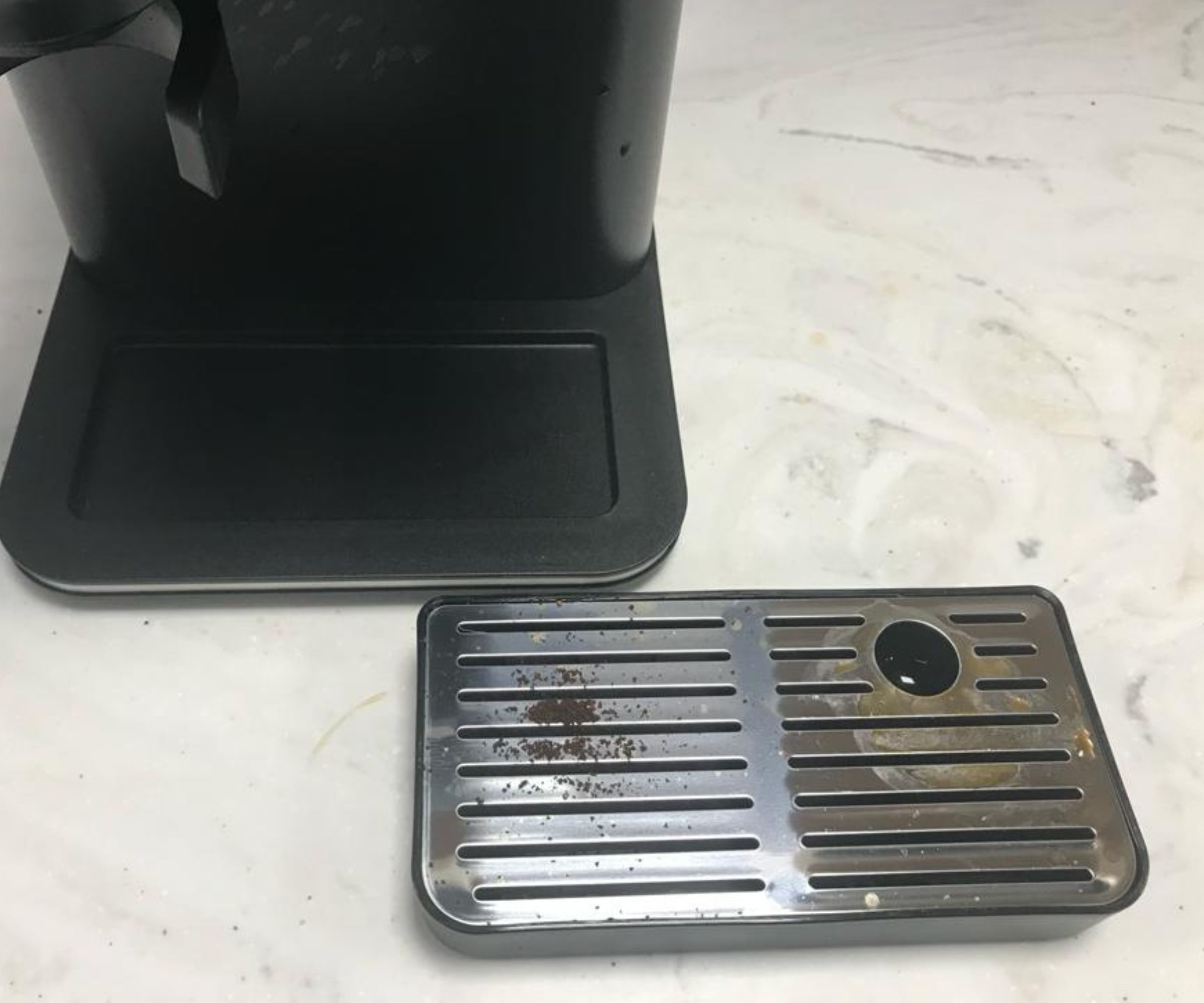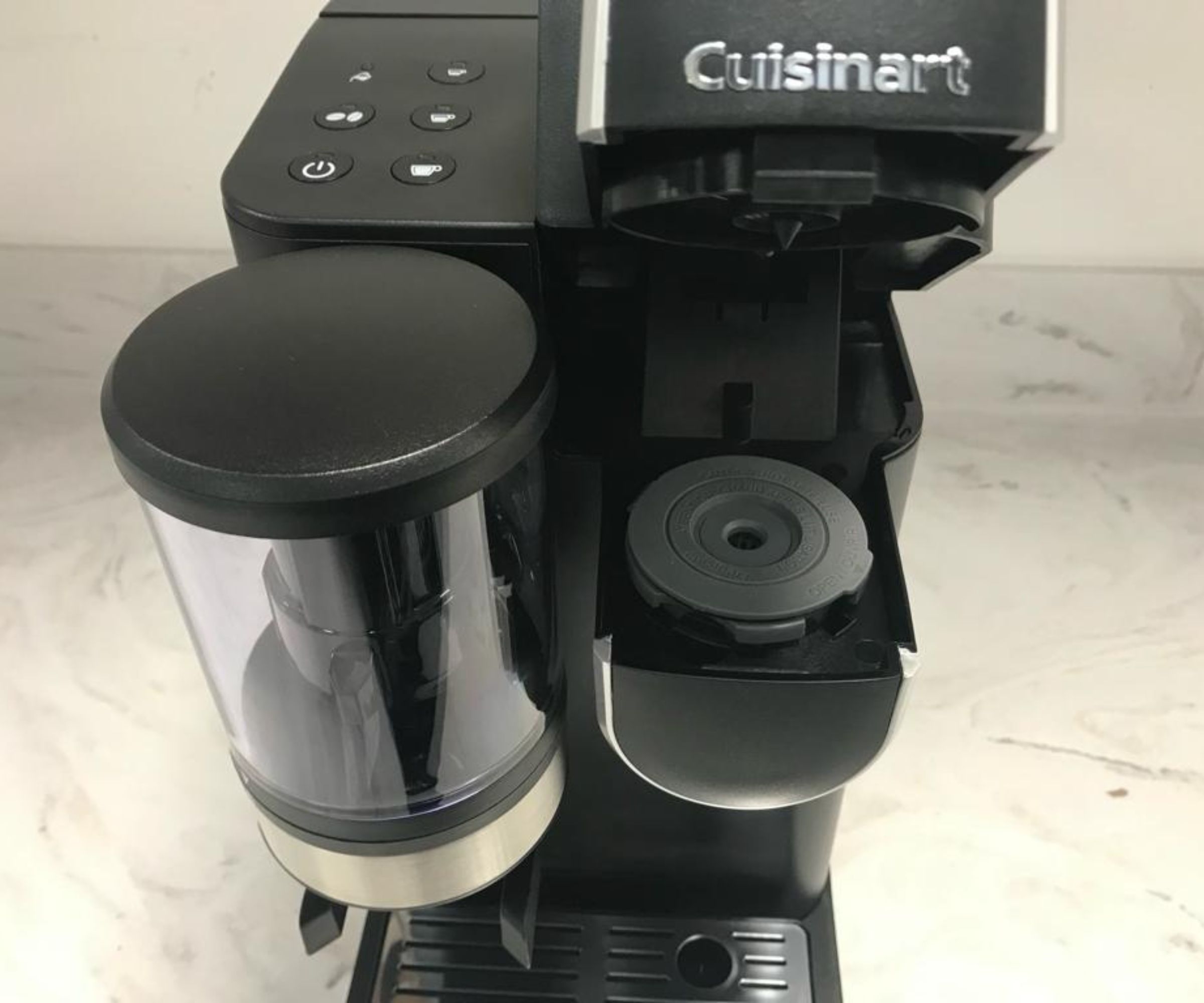How to clean a Cuisinart coffee maker – according to the team behind the machines
It might sound like a chore, but a clean Cuisinart will reward you with delicious coffee

Who are the best people to ask for advice on how to clean a Cuisinart coffee maker? Cuisinart, of course.
I spoke with Julie Shyti, Product Manager for Cuisinart, to find out what she does to ensure her coffee maker is always sparkling clean and in proper brewing order. There's plenty of generic advice for how to clean your coffee maker, but when it comes to deep cleaning a Cuisinart, there are some brand-specific tips and tricks that nobody knows better than Cuisinart's team.
As a former barista and H&G’s coffee expert, I’ve tested over fifty of the best coffee makers on the market. That means I’ve also had to deep clean well over fifty different models. I've included my tips and tricks for cleaning as well as cleaning experts' home remedies so that you can keep your machine running without having to fill your cart with specialist potions and powders.
How to clean a Cuisinart coffee maker
How to clean a Cuisinart coffee maker after brewing

Every time you use your coffee maker, you should give it a light clean. This prevents any build-up and stray coffee grounds from making your cup of coffee taste stale or bitter. As long as you’re deep cleaning your machine properly and staying on top of descaling, this should only take a few minutes.
The first thing to do is discard your used coffee grounds. These can go into the food waste or on your plants (our gardening team has lots of advice on how to use coffee grounds for plants).
Check the outside of your coffee for any coffee splashes — these are inevitable. Use a soft, damp microfiber cloth (available at Walmart) to wipe them away.
Clean the filter and glass carafe in warm, soapy water. Experts recommend using a gentle, eco-friendly detergent, such as Method detergent (available at Target) or Ecover dish soap, which you can pick up from Walmart. There is such a thing as having too much detergent: this will leave streaks and marks on your machine, so make sure to dilute it in water appropriately.
Once you've cleaned the carafe and filter, dry them thoroughly with a lint-free microfiber cloth before putting them back into the machine.
How to deep clean a Cuisinart coffee maker

You don’t need to do deep cleans often. In fact, Cuisinart builds its machines to let you know when you need to take action. They recommend deep cleaning when the clean light indicator turns on. Most of the time, this means that your machine needs descaling.
If you've not descaled a machine before, I have everything you need to know, directly from Julie Shyti, Product Manager for Cuisinart. She says 'Descaling is important because it means that there is calcium buildup inside your coffee maker.' Whilst it might be tempting to ignore this signal, she says you need to deep clean as soon as you see the indicator light because ‘the buildup will affect the flavor of your coffee and the functionality of your coffeemaker.'

Removing the calcium from your machine, or decalcifying, is simple. You have two options: there are plenty of home solutions worth trying, or you can buy a simple descaling solution from Amazon.
Julie Shyti, Product Manager for Cuisinart, recommends ‘filling the water reservoir with a mixture of 1/3 white vinegar and 2/3 water'. They don't have a set time frame for how often you'll need to descale, because it depends upon the hardness of your tap water and how often you use your coffee maker. I descale mine monthly, but that's a lot for most people. Three months is a good general rule to follow.
Julie says that the brand ‘includes charcoal water filters in all coffee makers to improve the quality of water used to brew coffee’. Charcoal water filters remove chlorine, bad tastes and odors so that your coffee tastes more consistent between different brew batches.
To start a clean function, hold down the clean indicator and the button will flash, indicating it’s on clean mode. Run the machine through until you’ve emptied the reservoir of your descaling solution. The machine will beep and the lights will shut off when the cleaning cycle is finished.
Home solutions such as vinegar are pungent and stubborn, so you’ll need to run your machine with fresh water numerous times to avoid whacky-tasting coffee.
FAQs

Coffee experts have debated using filtered water in coffee for decades. Some prefer using water which still has minerals, because they say this enhances coffee flavors. However, some say this can give you an inconsistent cup of coffee since you can’t control mineral content. If you live in a hard water area, I recommend using filtered water, because it will make descaling much easier. The task will go from a monthly chore to a three-monthly breeze. Just set a calendar reminder.
On that note, whilst it’s great for your machine to alert you when you have a scale build-up, I almost think you’re too late when the machine can detect scale. Make it a ritual that you descale your machine every three months and put it in your calendar. That way, you’ll be able to keep your machine running at its maximum capacity for longer.
If you can see some tougher scale on your machine experts recommend using Lime A-Way (available at Walmart) on particularly tough scale marks. It’s inexpensive and you probably already have it under the sink.
FAQs
How do I run the clean cycle on my Cuisinart coffee maker?
Once you've refilled the reservoir with cleaning fluid, press and hold the clean button. The clean indicator will flash, setting the coffee maker running. It's as simple as that.
What is a home remedy for cleaning my Cuisinart coffee maker?
Dilute white vinegar in water in a 2:1 part ratio respectively. If you want to clean the outside, Karina Toner, from Spekless Cleaning recommends using 'a mixture of water and baking soda to clean the coffee maker's exterior.' You'll have this in your cupboard but always do a patch test. It might strip more sensitive machines' glosses.
Sign up to the Homes & Gardens newsletter
Design expertise in your inbox – from inspiring decorating ideas and beautiful celebrity homes to practical gardening advice and shopping round-ups.

Laura is our eCommerce editor. As a fully qualified barista, she's our expert in all things coffee and has tested over thirty of the best coffee makers on the market. She has also interviewed Q-Graders and world-leading experts in the coffee industry, so has an intimate knowledge of all things coffee. Before joining Homes & Gardens, she studied English at Oxford University. Whilst studying, she trained as a master perfumer and worked in the luxury fragrance industry for five years. Her collection of home fragrance is extensive and she's met and interviewed five of the world's finest perfumers (also known as 'noses'). As a result of this expansive fragrance knowledge, she always puts quality and style over quantity and fads. Laura looks for products which have been designed simply and with thoughtful finishes.
-
 This is the single best upright vacuum we've ever tested – and it's on offer with $130 off at Shark for a limited time only
This is the single best upright vacuum we've ever tested – and it's on offer with $130 off at Shark for a limited time onlyYou won't want to miss this one
By Dan Fauzi
-
 Nate Berkus says slipcovered sofas are back on trend – and I just found a way to create this designer-approved laid-back look from just $86
Nate Berkus says slipcovered sofas are back on trend – and I just found a way to create this designer-approved laid-back look from just $86This classic style is making a strong comeback, but did you know you don't have to buy a whole new couch to get this Nate-approved look?
By Eleanor Richardson